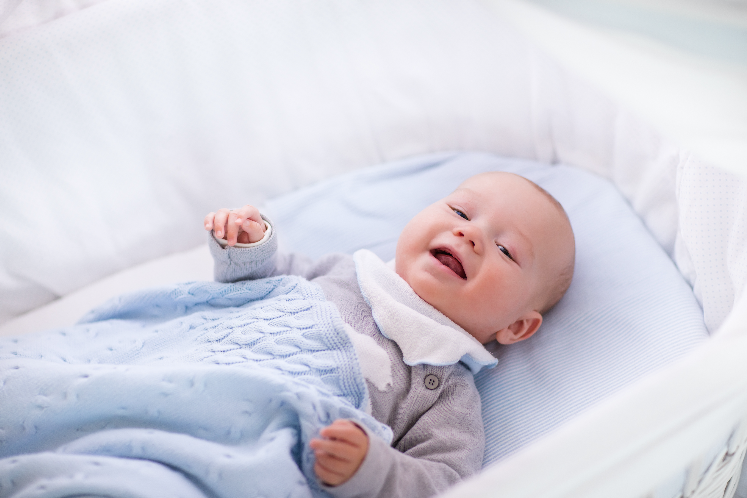In 2016, more than 3,600 sudden unexpected infant deaths occurred in the United States, according to the Centers for Disease Control and Prevention. These deaths occur among infants less than one year old and have no immediately obvious cause. A safer sleep environment can reduce this tragic risk, and Dr. Emily Pittman, hospitalist at IU Health West Hospital and assistant professor of clinical pediatrics for the IU School of Medicine, is sharing recommendations to help make sleep as safe as possible for your baby.
Follow the ABCs of Safe Sleep: All by myself, on my Back, in my Crib.
All by myself: The safest way for babies to sleep is alone. This helps prevent smothering. To keep your baby close, put the crib or bassinet next to your bed. Having your baby sleep in your room — on a separate surface — can reduce risk of sudden infant death syndrome (SIDS) significantly because parents are nearby to feed, comfort and monitor the infant. Room sharing, but not bed sharing, is strongly encouraged by the American Academy of Pediatrics (AAP). In addition, remove soft bedding, including pillows, blankets and other soft objects, from your baby’s bed.
On my Back: Babies are less likely to choke when lying on their backs – there is less of a risk of spit up getting in the windpipe. Although babies should be put down to sleep on their backs, it is important for babies to have “tummy time” while they are awake. During “tummy time,” monitor your baby closely and make sure they are awake for their own safety.
In my Crib: Sleeping flat in cribs, bassinets or playpens is safest. This keeps your baby from “slumping” and blocking her airway. Keep the crib empty so your baby does not suffocate. Many swings and rockers have an incline and are not a safe sleep space for infants.
Choose a Firm Sleeping Surface
A firm mattress in a bassinet or a safety-approved crib, covered with a fitted sheet, is safest for your baby. Sleeping furniture should not have drop sides, and slats should be spaced less than 2 3/8 inches apart. Make sure there are no gaps between the mattress and the crib or bassinet sides. Never put your baby down to sleep on a couch, armchair, waterbed or a regular mattress, even with portable bed rails.
Finally, don’t rely on devices that promise safety, and think twice about devices marketed to make bed-sharing “safe” or that claim to reduce the risk for SIDS. For questions about safe sleep habits for your baby, or for more ways to improve your child’s safety, check with your child’s doctor.






